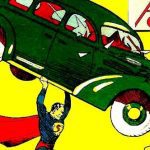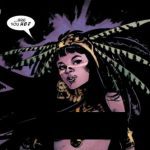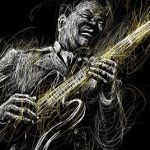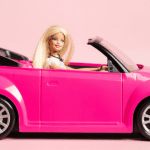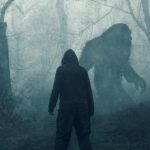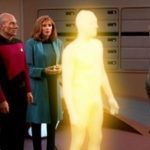 Mysteries
Mysteries  Mysteries
Mysteries  History
History 10 Surprising Stories About the Texas Rangers
 Humans
Humans 10 Philosophers Who Were Driven Mad by Their Own Theories
 Miscellaneous
Miscellaneous 10 Video-Game-Worthy Weapons and Armors from History
 Weird Stuff
Weird Stuff 10 Psychics Who Accurately Predicted Wartime Events
 The Arts
The Arts 10 Pieces of Art Inspired by a Broken Heart
 Health
Health 10 Science Fiction-Sounding New Medical Treatments
 History
History 10 Surprising Facts About the Father of Submarine Warfare
 Space
Space Ten Astonishing New Insights into Alien Worlds
 Weird Stuff
Weird Stuff 10 Bizarre Summer Solstice Rituals Still Practiced Today
 Mysteries
Mysteries Top 10 Haunting Facts About the Ghost Ship MV Alta
 History
History 10 Surprising Stories About the Texas Rangers
 Humans
Humans 10 Philosophers Who Were Driven Mad by Their Own Theories
Who's Behind Listverse?

Jamie Frater
Head Editor
Jamie founded Listverse due to an insatiable desire to share fascinating, obscure, and bizarre facts. He has been a guest speaker on numerous national radio and television stations and is a five time published author.
More About Us Miscellaneous
Miscellaneous 10 Video-Game-Worthy Weapons and Armors from History
 Weird Stuff
Weird Stuff 10 Psychics Who Accurately Predicted Wartime Events
 The Arts
The Arts 10 Pieces of Art Inspired by a Broken Heart
 Health
Health 10 Science Fiction-Sounding New Medical Treatments
 History
History 10 Surprising Facts About the Father of Submarine Warfare
 Space
Space Ten Astonishing New Insights into Alien Worlds
 Weird Stuff
Weird Stuff 10 Bizarre Summer Solstice Rituals Still Practiced Today
The 10 Most Obscure Facts about Comic Books
Comic Books. Since the days of World War II, people have been obsessed with them. From the first Action Comics to blockbuster events such as Infinity Wars and Endgame, fanboys and girls across the globe have commented, complained, and compared superheroes and superhero stories. Everyone is an expert these days.
With that in mind and with all due respect to the millions of avid comic book readers out there, it is impossible to know everything about this ever-expanding medium. While many facts are well-known, we have researched and now present the ten most obscure facts about comic books to you.
Related: Top 10 Movies You Didn’t Know Were Based On Independent Comics
10 The Indiana Jones Boulder Scene
Many people are familiar with the Disney TV show Duck Tales featuring the character Scrooge McDuck. Equally, many people are familiar with the opening boulder scene in Raiders of the Lost Ark. Fans of the former may remember that in Duck Tales the Movie: Treasure of the Lost Lamp, there is a parody scene with a boulder. That scene has been parodied in countless movies and television programs over the years and is assumed by most to come from the Indiana Jones movie.
However, the scene originated from a comic book featuring none other than Scrooge McDuck. In Carl Banks’s seventh issue of his Uncle Scrooge comic series from 1954, The Seven Cities of Cibola, Uncle Scrooge, Donald Duck, and their three nephews embark on a new adventure, in which the original “Boulder Scene” occurs. Stephen Spielberg paid homage to his favorite childhood comic in his iconic film, leaving many to believe it was his idea.[1]
9 An Original American Art Form
It is the consensus among most Americans that jazz is the only truly original American art form. However, according to David Jay Gabriel, executive director at the New York City Comic Book Museum, that is not entirely true. His research has turned up five purely American art forms: jazz, musical comedy, the mystery novel, the banjo, and comic books. While the first ever comic book was published in England in 1897, it was a compilation of children’s comic strips that had appeared in newspapers. The Yellow Kid in McFadden’s Flat coined the term “comic book,” but this was the first step in the art form’s evolution.
The superhero-based comic book did not exist until just before WWII and was created in the U.S. By the late 1930s and early ’40s, characters like Captain America, Superman, and Wonder Woman began to emerge as propaganda for the war. Considered to be the Golden Age of comics, these early titles still exist today and are more popular than ever, thanks to the movie industry. The NYC Museum of Comic Books contends that comics are an original American art form.[2]
8 Copyrights
Throughout the history of comic books, there have been many copyright battles, especially between the two giants of the industry, Marvel and DC. The most famous of these conflicts was over the name Captain Marvel. While it is a long and convoluted story, the result is relatively simple. Even though DC’s Captain Marvel first appeared in 1939, he was usually referred to by his magic word “Shazam.”
Marvel’s Captain Marvel, who didn’t appear until the late ’60s, has kept the name. The original Captain Marvel is now known solely as Shazam. If for no other reason than to make it less confusing at the box office since both these characters have had recent major motion pictures, and we all want to get to the right movie.[3]
7 Elvis Loved Comic Books
Elvis Presley loved reading comic books, and his favorite was Captain Marvel Jr. (a DC title). He discovered the superhero when he was 12 and quickly became obsessed. “It is reputed he got the original inspiration for his jet black hair with the curl hanging down in the middle of his forehead was inspired by the superhero. Presley’s childhood Lauderdale Court Apartment has been historically preserved, and a 1949 issue of Captain Marvel Jr. #51 lays on his old desk.
Captain Marvel Jr.’s alter ego is Freddy Freeman, Billy Batson’s (Captain Marvel) foster brother. He transforms by using the magic words Captain Marvel, the name of his hero, as opposed to Captain Marvel, who uses the word Shazam. While it may be a bit convoluted, it was Elvis’s favorite title, and he had a massive collection.[4]
6 Guest Stars
Over the years, a barrage of real-life celebrities and politicians has appeared in comic books. Here are a few examples. There was a time when Muhammed Ali fought Superman to save the world from mind-controlling aliens (Ali won). During the 2009 inauguration of Barack Obama, Marvel put out a Spider-Man comic in which the villain Chameleon had taken the form of the president-elect so he could be sworn in as president. The Secret Service didn’t know what to do when two identical Obamas appeared. Spidey is on the scene and questions both of them. When one fails to remember Barack’s high school basketball team nickname (Barry O’Bomber), the Chameleon is found out and arrested.
In a special issue of The Punisher, Frank Castle gets knocked out by rapper Eminem. Other notable people who have appeared on the pages of Marvel and D.C. comics include John F Kennedy (Superman), Anderson Cooper (Black Widow), David Letterman (The Avengers), and Stephen Colbert (Spider-Man). Additionally, Charles Barkley fought Godzilla in a Nike-produced comic series, and Geraldo Rivera appeared in a Count Duckula comic.[5]
5 Original Words and Phrases
Believe it or not, some everyday words and phrases originated in the funny pages. While the term “Brainiac” apparently did not come from a Superman comic, it was made famous by it. The word was initially used for a DIY computer kit, and consequently, the supervillain became a computer personality. The Popeye character “Alice the Goon” is presumably why the term goon has been subsequently used to describe hired thugs or henchmen.
Not surprisingly, “security blanket” comes from Charles Schultz’s character Linus from the Peanuts series. “Back to the drawing board” comes from a literal drawing board used by cartoonist Peter Arno in 1941. Shazam was the first to speak the phrase “holy moly.” Other words and phrases that cartoonists and comic writers coined include “McCarthyism,” “for crying out loud,” and “Jeep.”[6]
4 The First Female Superhero
While many believe it was Wonder Woman, the first female superhero was Sheena, Queen of the Jungle. Her first appearance was nearly four years before Wonder Woman’s. She was the “Guardian of the Jungle,” and she possessed an array of superpowers. Sheena wasn’t the only superpowered lady to appear before Wonder Woman; there were nearly a dozen.
Many say Fantomah of Jungle Comics was the first; others say it was Miss Fury (created by a woman). Marvel’s Black Widow and Black Cat appeared before DC’s Amazonian Princess. While Wonder Woman is arguably the most successful and popular female superhero of all time, she was far from the first.[7]
3 Real-Life Inspiration
It has been said that the most significant fictional characters in literature are based on real-life people. The most notable comic book example of this can be seen in X-Men. Stan Lee and Jack Kirby created the iconic series in the early 1960s at the height of the civil rights movement. The series is a famous commentary on that movement as the mutants’ plight parallels that of people of color in America.
With that in mind, it should come as no surprise that the peaceful and tolerant Professor X (Charles Xavier) was based on the Reverand Dr. Martin Luther King Jr and his counterpart, the intimidation advocating Magneto based on Malcolm X. Other notable examples include Ironman (Tony Stark), based on Howard Hughes, and the Joker, based on the German actor Conrad Veidt, specifically for his role in the classic The Man Who Laughs. Conversely, the Famous actor Nicholas Coppola, not wanting to use his famous uncle’s name to make it in Hollywood, adopted the stage name Nic Cage from his favorite comic book series, Luke Cage.[8]
2 The Spider-Verse
Anyone who reads comics is familiar with the 2018 animated blockbuster Spider-Man: Into the Spider-Verse. In this movie, the audience is introduced to a group of alternate-version Spider-Men. Everything from Spider-Ham (not Spider-Pig from The Simpsons), aka Peter Porker, to Spider-Gwen (Gwen Stacy) and even Spider-Man Noir.
However, some versions of Spider-Man are even more obscure, such as Sheep-Boy. Yes, in a parallel universe, Peter Parker was bitten by a radioactive sheep, turning him into the super-powered Sheep-Boy… with all the powers of a sheep. Spider-Man was arguably Stan Lee’s favorite of all the characters he created. In both cartoons and comics, the two met and had an adventure together. He wrote himself into the strip just as he made movie cameos. Spider-Man is currently the most popular superhero in the world, all told.[9]
1 The Lie Detector
William Moulton Marston is one of three men credited with creating the lie detector, but that was far from Marston’s only claim to fame. While Marston only lived to be 53 years old, he had an extensive list of accomplishments. He was a lawyer, a psychologist, the creator of the DISC system of personality classification, and the creator of the comic character Wonder Woman.
Born on May 9, 1893, William grew up in Massachusetts and attended Harvard University. Then, he taught at American University and Tufts University and developed his version of the polygraph machine. However, it is not the same type of machine used today. Marston became a somewhat famous public figure in the 1930s, using his device to endorse name-brand products like Gillette.
In 1940, he began work as an educational consultant for All-American Publications, which later merged with another company to form DC Comics. The following year, he wrote his own comic and created Wonder Woman for issue #8 of All-Star Comics. It seems only fitting that the creator of the “Lasso of Truth” would also invent a lie detector machine.[10]

